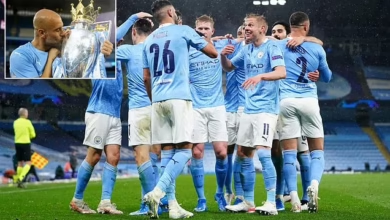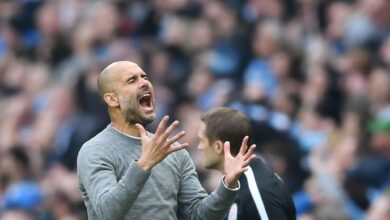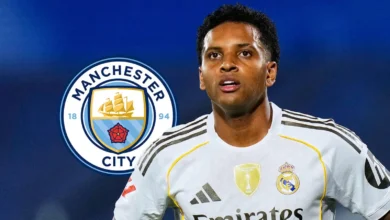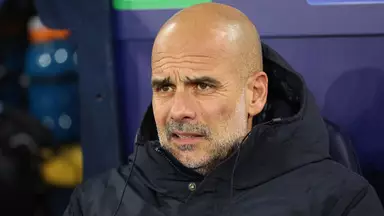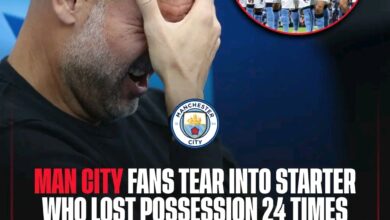Liverpool winger will not play tonight after teaching verbal agreement to sign for Bournemouth
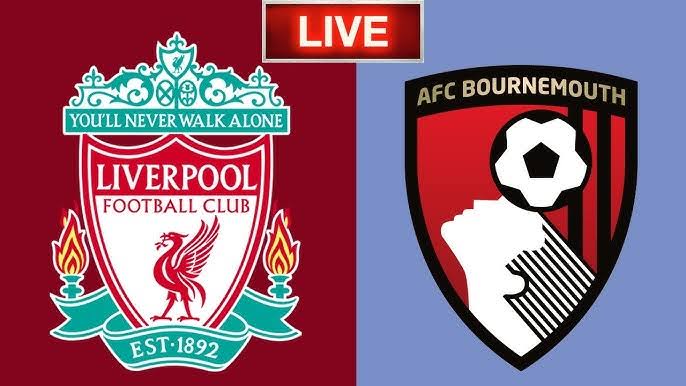
As the 2025–26 Premier League season kicks off, most headlines surrounding Liverpool have centred on Arne Slot’s title defence, the record signing of Florian Wirtz, and the tactical tweaks from the Dutchman’s first successful year in England. Yet, beneath the big-money arrivals and the trophy celebrations, one storyline is quietly unfolding that says much about Liverpool’s current transfer strategy and the evolving marketplace of the Premier League.
Ben Doak, the 19-year-old Scotland international winger, is on the verge of leaving Anfield to join Bournemouth in a deal expected to be worth around £25 million. This is not merely the story of a young player switching clubs — it is a transaction that touches on player development pathways, the economics of mid-table Premier League recruitment, Liverpool’s evolving squad philosophy, and Bournemouth’s ambition in a crowded top-flight landscape.
Doak’s exclusion from Liverpool’s matchday squad for their season opener against Bournemouth is no coincidence. Multiple reputable outlets, including BBC Sport, Inside Futbol, and journalists close to the deal such as Paul Joyce, have confirmed that the winger is in advanced talks to join the Cherries. The timing of the move — and the fee involved — makes this one of the most intriguing transfers of the summer window
Ben Doak’s football journey began in earnest at Celtic, where his electric pace, direct dribbling, and aggressive attacking instincts quickly drew attention in Scottish youth football. His style was raw but unmistakably dangerous: the sort of wide player who thrives on running at defenders, breaking lines, and injecting chaos into organised defences.
By 2022, Liverpool’s scouting network — well known for identifying young talent early — had seen enough. At just 16, Doak was lured to Merseyside, a move that came with significant expectation and the promise of a clearer path to first-team football than perhaps at Celtic, where immediate senior opportunities can be fiercely contested.
In his early months at Liverpool, Doak featured in youth competitions and impressed in the UEFA Youth League. His performances were a combination of fearless attacking intent and the occasional naivety of a teenager still adjusting to the physical and tactical demands of elite football
Doak’s senior debut came quicker than many anticipated, as Liverpool’s congested fixture lists in domestic cups and Europe opened a window for rotation. Over the course of two seasons, he made 10 senior appearances for Liverpool, often used as a late-game injection of energy. In those cameos, flashes of his ability were clear: a low centre of gravity that allowed him to turn defenders, a willingness to take risks, and the sort of acceleration that can leave even seasoned Premier League full-backs scrambling.
Recognising the need for consistent game time, Liverpool sent Doak on loan to Middlesbrough for the 2024–25 campaign. It proved a pivotal year for his development. Playing 24 matches in the Championship, he scored three goals and recorded seven assists before a hamstring injury curtailed his season. While the injury was a setback, the numbers — 10 goal contributions in under 25 games — highlighted his impact potential at senior level.
Entering the 2025 summer transfer window, Doak’s situation was finely poised. His stock remained high despite the injury, and there was no shortage of suitors. Premier League sides West Ham and Bournemouth expressed interest, as did Portuguese giants Porto, while in Scotland, both Celtic and Rangers considered moves that would have brought him back north of the border.
However, Bournemouth emerged as frontrunners for two main reasons: a clear need for attacking reinforcements following the impending £42.5m sale of Dango Ouattara to Brentford, and the club’s financial position after high-profile departures earlier in the summer. Losing key defenders Illia Zabarnyi, Dean Huijsen, and Milos Kerkez for a combined total of around £150m gave the Cherries a rare window to invest aggressively.
Manager Andoni Iraola has been candid about his squad’s state in preseason interviews, admitting they are “not where they want to be” heading into the new campaign. Yet he has also promised “important movements” before the transfer window shuts on 1 September.
So far, Bournemouth have made targeted reinforcements: goalkeeper Djordje Petrovic, left-back Adrien Truffert, and centre-back Bafode Diakite. Additionally, they welcomed back Eli Junior Kroupi, a talented forward signed in January but loaned immediately to Lorient. The Doak pursuit represents something different — an investment in a high-upside, Premier League-ready attacker whose best years are almost certainly ahead of him.
With Ouattara leaving, Bournemouth’s right-sided attacking options require depth and dynamism. Doak, with his direct running, could fill that gap while offering flexibility to play on either flank.
From Liverpool’s perspective, the decision to entertain offers for Doak is multifaceted. First, the club’s depth in wide attacking areas has shifted dramatically. The summer arrivals of Florian Wirtz and Hugo Ekitike (who can play wide as well as centrally) add competition, while Jeremie Frimpong’s wing-back versatility offers another attacking outlet.
Second, the club is in the midst of a carefully balanced transfer strategy. Selling a player like Doak — highly rated but not essential to the immediate first-team plans — for £25m represents pure profit under UEFA’s financial regulations, as he was signed for a nominal development fee from Celtic. That profit can be reinvested in priority areas, namely a new striker and potentially another centre-back, with Marc Guehi and Alexander Isak as primary targets.
There is also the realistic assessment that Doak, at this stage, needs regular Premier League minutes — something he is unlikely to get at Anfield in 2025–26 given the competition
While Liverpool’s asking price is set at £25m, Bournemouth are expected to push for a reduction. The final fee could involve performance-based add-ons, sell-on clauses, or even a buy-back option, which Liverpool are known to prefer for highly rated youngsters. Such clauses allow selling clubs to retain a degree of control should the player’s value skyrocket.
From a market perspective, £25m for a 19-year-old with limited Premier League experience may appear steep, but the fee reflects two realities: the premium on young, homegrown talent, and the fact that multiple clubs were interested. In today’s inflated market — where proven top-flight attackers can command £50m or more — this represents a calculated gamble for Bournemouth.
Doak is, above all, a vertical threat. His acceleration over the first 10 yards is elite, allowing him to create separation quickly. He thrives in transitional moments, where open space can be attacked, but he also has the close control to navigate tighter defensive setups.
At Bournemouth, Iraola’s system — which blends structured pressing with quick attacking transitions — should suit Doak’s strengths. He can operate on the right flank, driving inside onto his stronger foot, or play as a traditional winger on the left, delivering crosses. His work rate off the ball also aligns with Iraola’s demands, though defensive positioning remains an area for refinement.
While Doak’s upside is considerable, there are risks. His injury record, particularly the hamstring issue that ended his Middlesbrough season, will need careful management. Additionally, his decision-making in the final third can be inconsistent — a common trait in young wingers but one that must improve for him to maximise his output at Premier League level.
For Bournemouth, the hope is that consistent game time, trust from the manager, and a defined tactical role will accelerate his maturity. If he adapts quickly, he could be one of the league’s breakout players this season.
This transfer also sparks debate among Liverpool fans about the pathway for academy and young signings. Selling Doak after just 10 senior appearances could be seen as a sign of impatience. However, Liverpool’s model under both Jurgen Klopp and now Arne Slot has shown a willingness to cash in on players at peak market value, reinvesting in areas of greater need
If Liverpool insert a buy-back clause, it signals they still believe in Doak’s potential — just not at the right stage for him to contribute significantly at Anfield.
At the time of writing, Doak’s move is in the advanced negotiation phase. Should personal terms be agreed — and given Bournemouth’s financial flexibility after major sales, this seems likely — the transfer could be completed swiftly, possibly within days of the season opener.
The deal will be closely watched, not only for its immediate impact but for what it reveals about the evolving power dynamics in the Premier League. Clubs like Bournemouth, armed with significant sales revenue and shrewd recruitment strategies, are increasingly capable of competing for young, high-upside talent that once might have been hoarded by the league’s traditional “big six.”
In the short term, this transfer appears mutually beneficial. Bournemouth get a talented, hungry young winger to replace outgoing pace and creativity. Doak gets the platform to play regularly in the Premier League. Liverpool get a sizeable fee to reinvest in their title defence and future squad planning.
The real intrigue will come in two or three years. If Doak flourishes on the south coast, this deal could be remembered as a masterstroke for Bournemouth — or as another example of Liverpool’s transfer market nous, should a buy-back be exercised.
In the ever-fluid theatre of Premier League transfers, the Ben Doak saga is not just about one player moving clubs. It is about strategy, timing, opportunity, and the fine margins that separate a good deal from a great one







